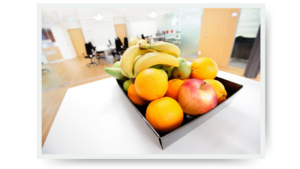Tasting the Seasons: Apples, Pears, and the Art of Ripening
- By Erin Mittelstaedt
- Last Updated On
- Reading Time: 2 mins.
My youngest son took a bite of an apple the other day and scrunched his face like he had just sucked on a sour candy. Being only three, he opened his mouth, stuck out his tongue, and dropped the piece on the table. “Put it back, Mama,” he said, “It’s not ready yet.”
He was tasting a Granny Smith apple, which tends to be more tart than other apples, so I can’t say his reaction was unexpected. But of course, you can’t put an apple back on the tree!
Apples are what we call “climacteric,” meaning they continue to ripen after being picked because they produce a lot of gas called ethylene that speeds up ripening. Bananas, peaches, pears, avocados, and tomatoes are other great examples. For instance, if you leave a banana on the counter, you’ll notice it becomes sweeter and softer over time. In apples, however, ethylene primarily affects texture, causing them to soften rather than become sweeter.
There are also “non-climacteric” fruits that stop ripening once they’re harvested. A few examples are grapes, cherries, strawberries, and citrus fruits like oranges and lemons.
Although I love apples, one of my favorite fall climacteric fruits is the pear. Pears, like bananas, can be eaten at all stages of ripeness—it really comes down to personal preference. Peak ripeness can be hard to recognize, too, and if you miss it, your pear can quickly get overripe and mealy.

My favorite way to tell if a pear is ripe is to check around the stem. Once the flesh around the stem has a little give (even if the rest of the pear still feels firm), it’s usually ready to eat. We have lots of pears coming in this fall, so there will be plenty of time to experiment with which ripeness level you prefer.
One pear exception to the climacteric rule is the Asian pear. These amazing pieces of fruit (one of my most favorite fall treats) are technically pears, but they eat more like apples and stop ripening when you pick them. Asian pears are best-eaten firm and kept cold, unlike a traditional pear that should be kept at room temperature to ripen.
If you want to learn more about Asian pears and meet some of our Asian pear growers, stay tuned. I’ll share more about them in next week’s Chief Banana newsletter.
Welcome to the Chief Banana newsletter—weekly letters from the desk of The FruitGuys’ CEO. Find more Chief Banana newsletters here. To get Chief Banana in your inbox every week, fill out the “Subscribe to our Newsletter” form on this page.
Recent Articles
Work Better With KiZE Bars: Clean-Ingredient Office Treats That Give Back
Farm-Fit Brings Fresh, Locally Sourced Produce to Campus
APC and The FruitGuys Partner Up to Donate Fruit to Californians in Need
Meet Earthseed: A California Fruit Farm in Harmony with Nature
Which Fruits Have the Most Fiber? What to Eat for a Healthier Gut
Subscribe to our Newsletter
"*" indicates required fields



